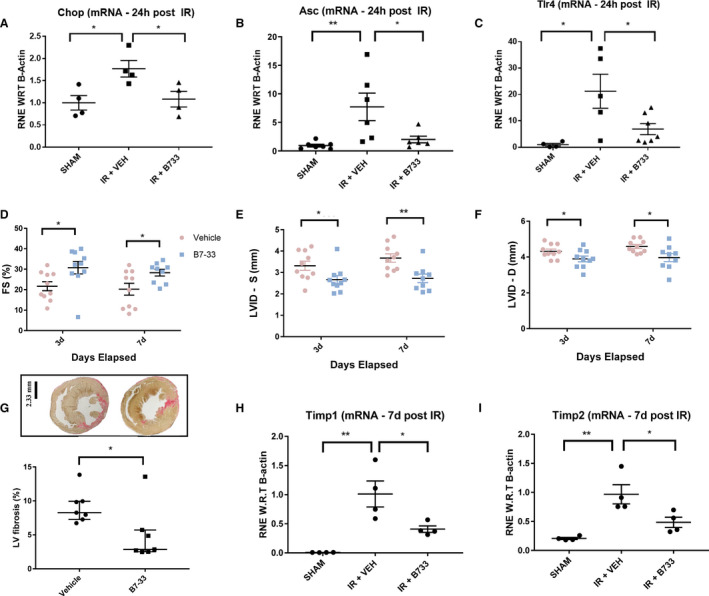Figure 4. Real‐time polymerase chain reaction analysis at 24 hours, and assessment of cardiac function at 3 & 7 days post MI.

A through C, Treatment with B7‐33 significantly lowers Chop (CCAAT/enhancer‐binding protein‐homologous protein), Asc (apoptosis‐associated speck‐like protein containing a caspase recruitment domain), and toll‐like receptor 4 (Tlr4) mRNA in extracts from cardiac tissue, 24 hours post myocardial infarction (MI) (for A through C, n=9–10). D, Preserved fractional shortening (FS) 3 and 7 days post MI in B7‐33–treated group (30.73±2.20% and 28.29±1.63% vs 21.66±3.05% and 20.25±2.92% for B7‐33– and vehicle [VEH]‐treated group, respectively). E, Left ventricular internal diameter at systole (LVID‐S) at 3 and 7 days (2.66±0.18 and 2.72±0.2 mm vs 3.31±0.21 and 3.70±0.19 mm for B7‐33 and VEH, respectively). F, LVID at diastole (LVID‐D) for 3 and 7 days (3.90±0.15 and 3.96±0.22 mm vs 4.32±0.12 and 4.58±0.12 mm for B7‐33 and VEH groups, respectively) was significantly lower in B7‐33–treated groups (for D through F, n=4–7 per group). G, LV fibrosis is significantly lower in B7‐33–treated animals (n=7; 2.86% [2.52%‐5.71%]) than in VEH‐treated animals (n=7; 8.27% [7.27%‐9.95%]; bar=2.33 mm). H and I, Treatment with B7‐33 significantly lowers tissue inhibitor of metalloproteases (Timp) 1 and Timp2 mRNA expression in cardiac tissue 7 days post ischemia‐reperfusion (IR) surgery (n=4 for per group). Data expressed as relative normalized expression with respect to (RNE W.R.T) B‐actin. For A through C, H, and I, 1‐way ANOVA was used to determine significance, and if P<0.05, Holm‐Sidak test was used for post hoc analysis. For D through F, unpaired T test was used. For G, Mann‐Whitney U test was used to account for the nonnormal distribution. *P<0.05, **P<0.01.
